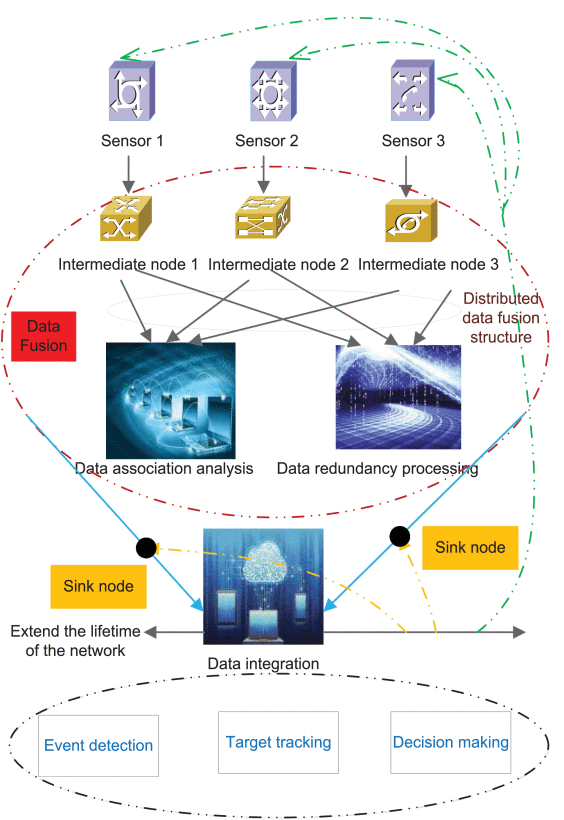Multi-Sensor Complex Network Data Fusion Under the Condition of Uncertainty of Coupling Occurrence Probability
In a multi-sensor network, each sensor node has multiple sensors detecting diverse information from a particular environment. The nodes locally communicate with each other to monitor and collect information about a specific object. The system then applies algorithms to extract the most relevant data for transmission to the cloud server. These networks use data fusion to process diverse information provided by the sensors. The fusion of information can enhance the interpretation of the object’s environment and helps make more accurate and reliable decisions. Data fusion algorithms help reduce information redundancy, ensuring data transmission and calculation efficiency. Optimized time coverage and sensor usage improve data and prevent scalability problems in the network.
Research on multi-sensor information fusion technology has developed various algorithms and methods. Currently, there are algorithms based on concepts such as fast data association, decorrelation-correction data association, and improved evidence-based situation assessment methods. These methods can help to avoid paradoxes in evidence theory, increase evaluation efficiency and accuracy, and improve target state prediction in cluttered environments.
The researchers present an investigative study of distributed clustering technology for data fusion in wireless sensor networks (WSN). The novel data fusion algorithm uses adaptive weighting of sensor data in WSN.
Sensor data often contain noise that may lead to estimation errors or uncertainty. The mean square error can represent the quality of the estimation algorithm. In multiple sensor networks, the accuracy of each sensor and its surrounding environment is different, and overall system accuracy may be uneven. It can lead to a large amount of error in the final results. The proposed adaptive weighted data fusion algorithm assigns a weight value to each set of sensor data based on its accuracy and precision. The higher the accuracy, the smaller the error, and the greater the weight value. On the other hand, lower accuracy leads to a large amount of error and smaller weight values. By multiplying the measurement data by these weight values and averaging them, we can improve the accuracy and redundancy of the measurement results.
The researchers simulated the algorithm using a group of five sensor nodes, with one serving as the cluster head and the other four collecting data every minute. In an ideal environment, all sensor nodes are assumed to have identical characteristics and can monitor temperature and humidity. The four sensors collect approximately 100 sets of data.
Compared to other algorithms, the proposed algorithm achieved better stability and interference resistance during the fusion of temperature and humidity data. The average error measured is less than 0.02 for the proposed algorithm, much less than its contemporary algorithms. The relationship model, obtained by applying the least square fitting technique to multiple datasets, is transmitted for further processing. The transmission load gets reduced to half, and the calculation time was only 0.76 seconds without network delay. The method also reduced energy consumption at the cluster head nodes of the network, resulting in a longer network lifespan.
The proposed algorithm could achieve better accuracy and energy efficiency than other contemporary fusion algorithms.




